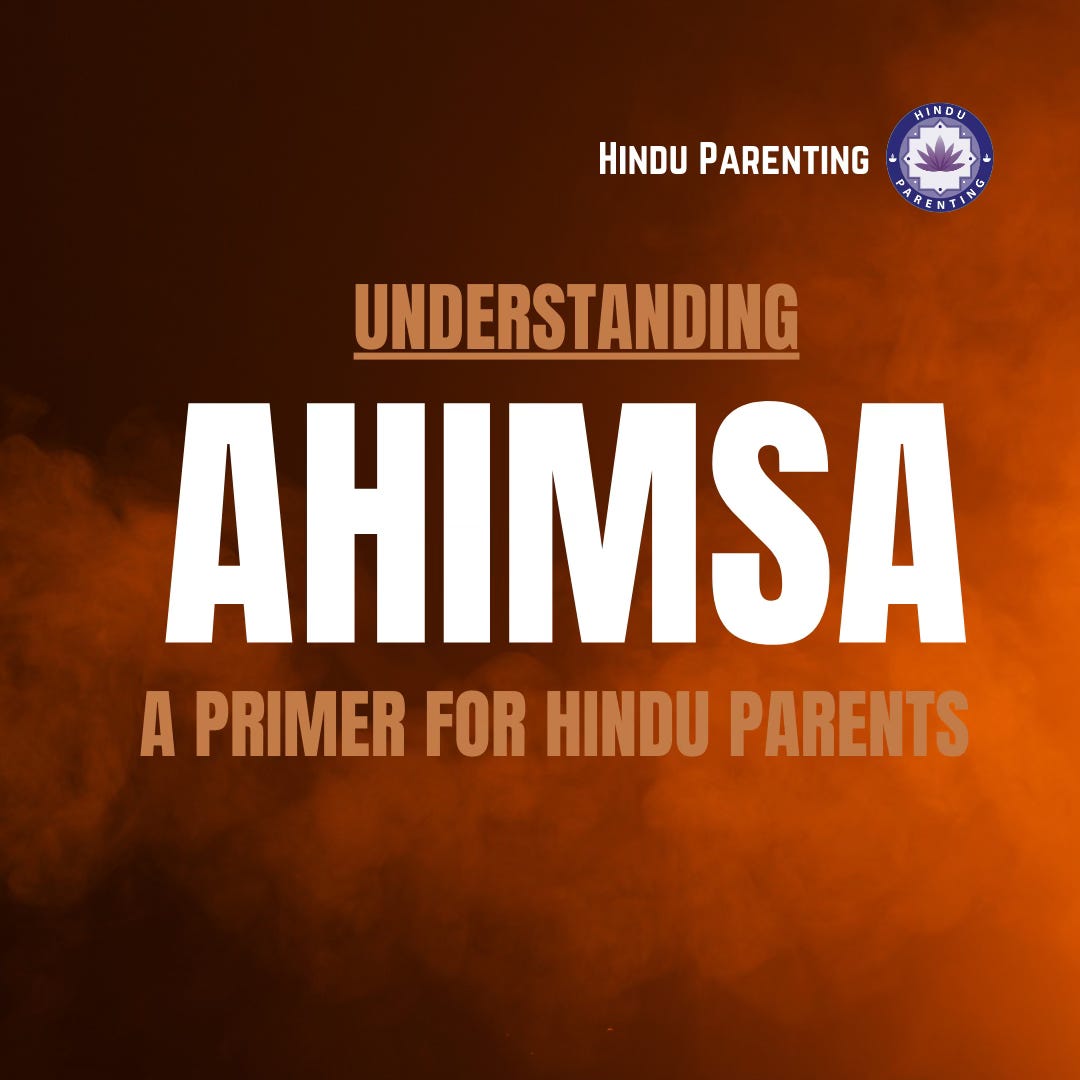Ahimsa ≠ Pacifism: The True Meaning of Non-Violence in Sanatana DharmaIn the modern world, Ahimsa is one of the most misunderstood concepts from the Hindu tradition. Often equated with blanket pacifism or passive tolerance, it is quoted in isolation and weaponized to guilt victims into submission. But when correctly understood in the framework of Sanatana Dharma—roughly translatable to Eternal Sustainability—Ahimsa is not about inaction; it is about righteous, sustainable action. What Is Violence, Really?Violence is not just an act of physical aggression. It is any unjust harm that threatens the balance and integrity of individuals, families, cultures, or civilizations. Harm can be systemic, ideological, psychological, or economic. A punch is violent, yes—but so is sustained indoctrination that teaches a child to hate their culture, or a narrative that urges a community to remain passive in the face of annihilation. Withholding necessary defense is also violence. If you see evil and do nothing, you are no longer neutral—you are complicit. Defense Is Not Violence. It Is Survival.Every living organism, every culture, and every civilization survives because it knows how to defend itself. Inaction in the face of attack is not nobility. It is decay. When Arjuna hesitated to fight in the Mahabharata, it was not because he was immoral—but because he was overwhelmed by emotional pacifism. He looked at his own family—cousins, elders, teachers—and thought of laying down his arms to walk away from the war. But Lord Krishna, standing for Dharma, did not praise this surrender. Instead, he chastised Arjuna’s weakness and reminded him of his sacred duty to uphold righteousness—even if it meant waging war.
Krishna further explains that failing to act in the face of Adharma is not virtue—it is failure. Arjuna’s reluctance may have appeared moral on the surface, but it was rooted in emotional confusion. True Dharma demanded action—not for revenge, but for justice and the protection of the world’s moral fabric. When Pacifism Becomes DangerousTo understand how Ahimsa can be dangerously misinterpreted, we must look at a sobering historical example. In the 1940s, during the violent communal riots of the Partition period, advice circulated in prominent publications suggesting that women should choose suicide over resistance if assaulted during mob violence. Statements like these were presented as moral high ground, encouraging women to “preserve their honor” by dying rather than defending themselves. This line of thinking is not only outdated but deeply harmful. It denies victims their agency, their right to life, and most importantly—their right to resist injustice. Such advice, given to vulnerable people under siege, isn’t just misguided—it can become an accomplice to systemic abuse. Passivity in the face of evil does not constitute virtue. When threats are real and present, glorifying self-harm or submission as nobility betrays the very idea of Dharma. Ahimsa Paramo Dharmaḥ: A Higher Standard, Not Blind InactionThe phrase Ahimsa Paramo Dharmaḥ—“Non-violence is the highest Dharma”—is often wielded as an argument against any form of resistance. But let’s reflect deeply: what is Dharma? Dharma is not a fixed set of rules. It is context-sensitive righteousness—what is right, sustainable, and just in a given situation. Ahimsa is Paramo Dharma not because it means inaction, but because avoiding unnecessary harm is the ideal. But ideals exist within a world that is messy and imperfect. When Adharma (unrighteousness, unsustainability) threatens to unravel the world, to not fight back becomes a violation of Dharma itself. Ahimsa, then, requires wisdom, not weakness. It means acting in such a way that minimizes harm to the world—not pretending harm isn’t happening. Sanatana Dharma = Eternal SustainabilitySanatana Dharma is often translated as the “eternal religion,” but a more grounded, philosophical translation is Eternal Sustainability:
Thus, Sanatana Dharma is the set of principles that eternally sustain life, balance, and harmony—not just for humans, but for the entire cosmos. In this framework, actions are not judged in isolation. What matters is not whether an act looks peaceful or aggressive—but whether it serves the sustainable welfare of all beings. Sometimes, this may mean restraint. Other times, it demands action, resistance, or even war. The Takeaway for Hindu Parents and YouthTo all Hindu parents and children: Ahimsa is not about being soft. It is about being sustainable. Do not allow the sacred idea of non-violence to be reduced to passivity. Teach your children to distinguish between:
Let them understand that true Ahimsa is active. It demands not just a clean hand, but a clean conscience. It is not about appearing good; it is about doing what is necessary to preserve goodness in the world. Because when Adharma rises, silence is not purity. It is betrayal. Note: This is a guest post, an article contributed by a parent who wishes to be known as: A Bharatiya, humble successor to the greatest civilization the world has ever seen. If you’d like to help our cause by writing a guest post, or by sharing your thoughts in a podcast, please reach out to: contact@hinduparenting.org or leave us a comment. Please support us by signing up for our newsletters on Substack and if possible, upgrading to a paid subscription. Our podcasts (The Hindu Parenting Podcast and The Authentic Valmiki Ramayan Podcast)) can be heard on Spotify, YouTube, Apple and Google Podcasts too.Please follow us on Twitter (X), Instagram or any social media platform of your choice.We are on most social media platforms with the handle “hinduparenting”. We have a Whatsapp and Telegram channel too. Our website is hinduparenting.orgFor comments and podcast suggestions, please use the comments tab or write to us at contact@hinduparenting.orgThe opinions expressed by guests are their personal opinions and Hindu Parenting does not assume any responsibility or liability for the accuracy, completeness, suitability or validity of anything shared on our platform by them.Copyright belongs to Hindu Parenting.You're currently a free subscriber to Hindu Parenting. For the full experience, upgrade your subscription. |
Understanding Ahimsa
07:17
0





